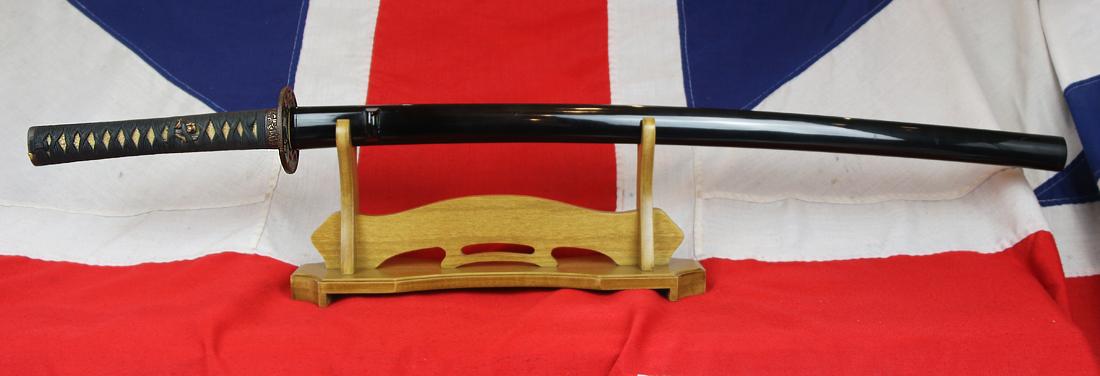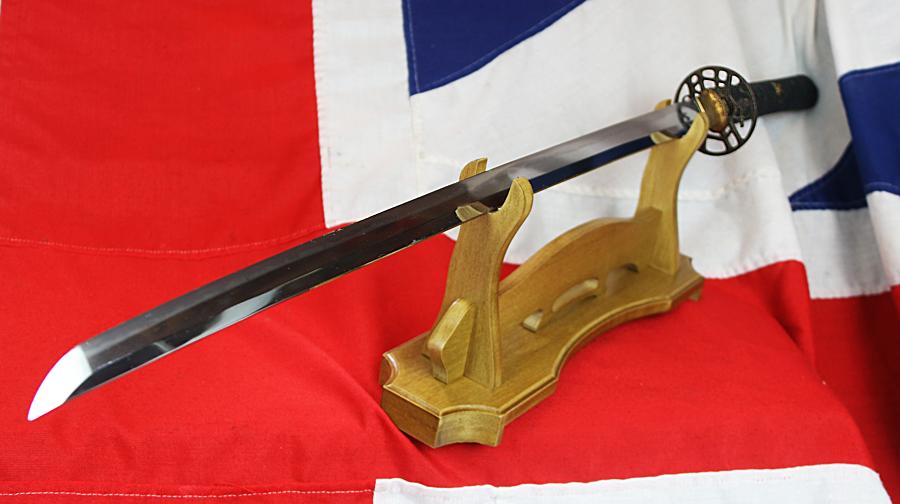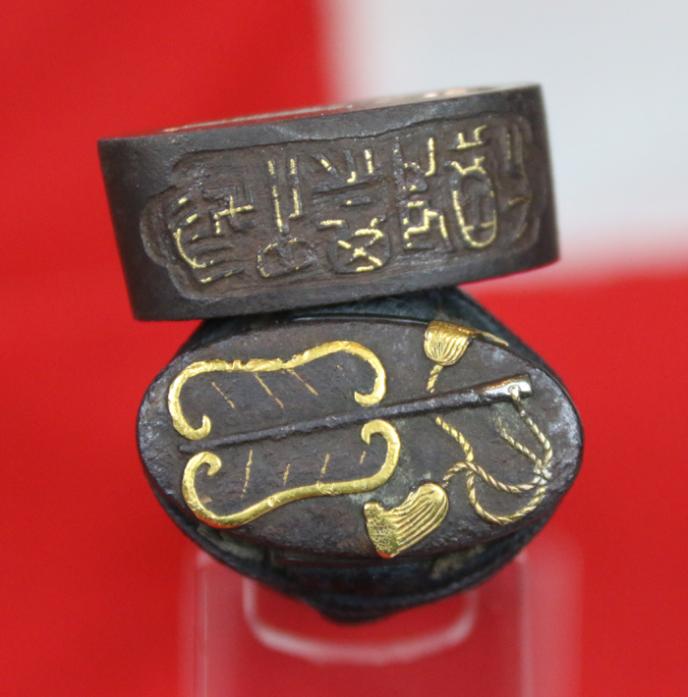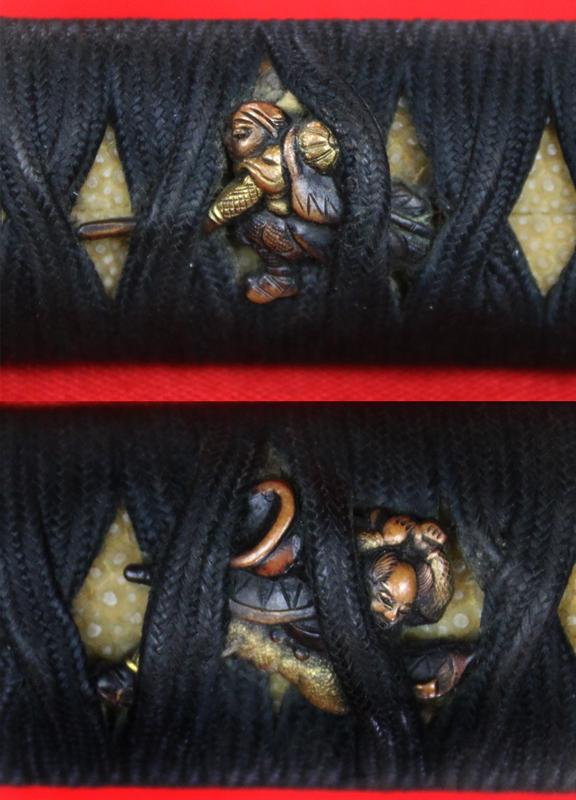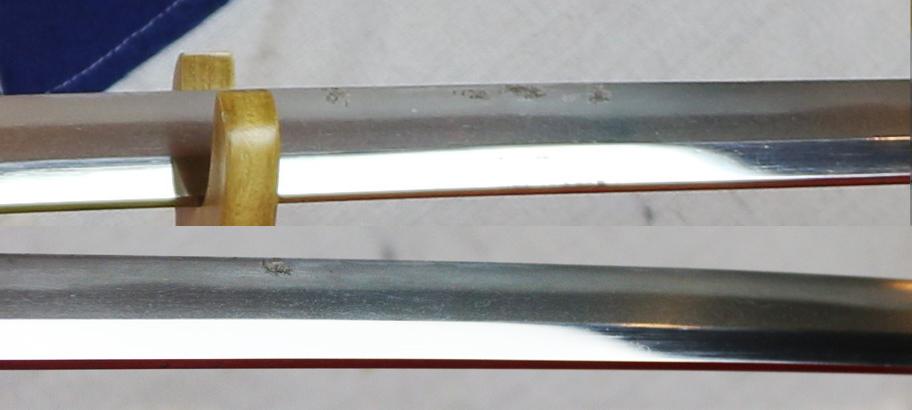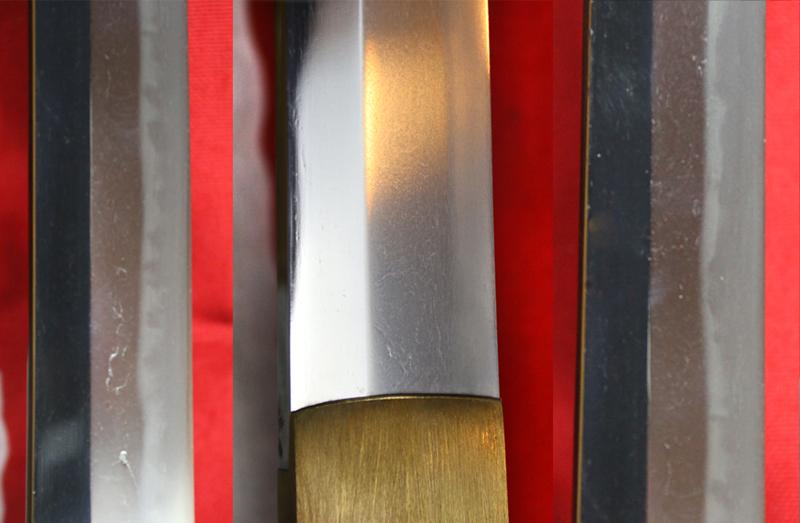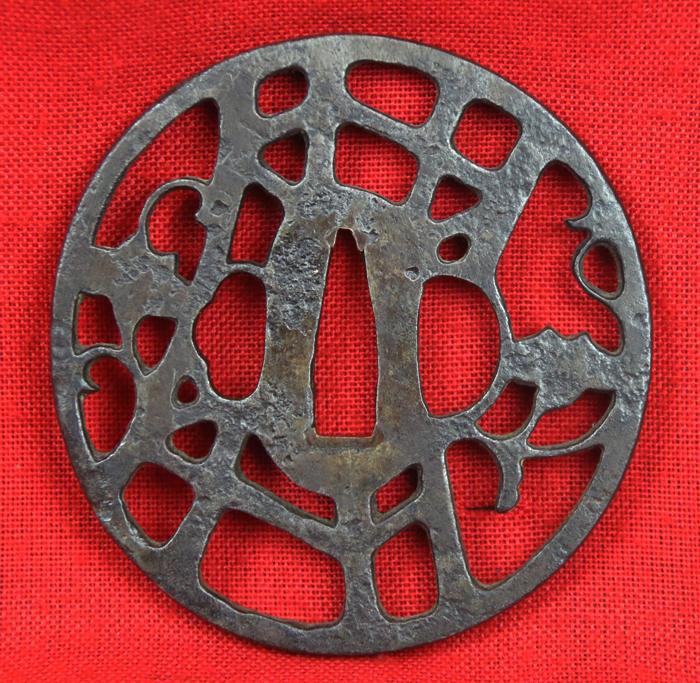A Beautiful Shinto Katana By Kaga Kiyomitsu With NTHK Kanteisho Papers
With super original Edo period koshirae mounts and fittings. Higo fuchigashira with pure gold onlay with a war fan and kanji seal stamp. Shakudo menuki under the hilt wrap of samurai warriors fighting with swords and polearm. Iron plate o-sukashi tsuba, black lacquer saya with buffalo horn kurigata. Superb hamon and polish with just a few aged surface stains see photo 7
The Hamon is the pattern we see on the edge of the blade of any Nihonto (日本刀) and it is not merely aesthetic, but is due to the differential tempering with clay applied to weapons in the forging process. Japanese katanas are unique in the way of the forging process, where apart from the materials the system is tremendously laborious. In short, before temper, the steel has different clays applied that when submerged in water causing the characteristic blade curvature and the pattern of the hamon. This also causes the katanas to be flexible and can be very sharp, since the hardening of the steels at different temperatures causes a part of the sword to be softer and more flexible called Mune or loin and the other harder and brittle, thus having a High quality cutting edge capable of making precise and lethal cuts.
There are various types and variants, some simple and others very complex. Depending on how the clay is applied, it will form some patterns or others.
According to legend, Amakuni Yasutsuna developed the process of differential hardening of the blades around the 8th century. The emperor was returning from battle with his soldiers when Yasutsuna noticed that half of the swords were broken:
Amakuni and his son, Amakura, picked up the broken blades and examined them. They were determined to create a sword that will not break in combat and they were locked up in seclusion for 30 days. When they reappeared, they took the curved blade with them. The following spring there was another war. Again the soldiers returned, only this time all the swords were intact and the emperor smiled at Amakuni.
Although it is impossible to determine who invented the technique, surviving blades from Yasutsuna around AD 749–811 suggest that, at the very least, Yasutsuna helped establish the tradition of differentially hardening blades.
By the time Ieyasu Tokugawa unified Japan under his rule at the Battle of Sekigahara in 1600, only samurai were permitted to wear the sword. A samurai was recognised by his carrying the feared daisho, the big sword daito, little sword shoto of the samurai warrior. These were the battle katana, the big sword, and the wakizashi, the little sword. The name katana derives from two old Japanese written characters or symbols: kata, meaning side, and na, or edge. Thus a katana is a single-edged sword that has had few rivals in the annals of war, either in the East or the West. Because the sword was the main battle weapon of Japan's knightly man-at-arms (although spears and bows were also carried), an entire martial art grew up around learning how to use it. This was kenjutsu, the art of sword fighting, or kendo in its modern, non-warlike incarnation. The importance of studying kenjutsu and the other martial arts such as kyujutsu, the art of the bow, was so critical to the samurai, a very real matter of life or death, that Miyamoto Musashi, most renowned of all swordsmen, warned in his classic The Book of Five Rings: The science of martial arts for warriors requires construction of various weapons and understanding the properties of the weapons. A member of a warrior family who does not learn to use weapons and understand the specific advantages of each weapon would seem to be somewhat uncultivated. We rarely have swords with papers for our swords mostly came to England in the 1870's long before 'papers' were invented, and they have never returned to Japan for inspection and papers to be issued. However, on occasion we acquire swords from latter day collectors that have had swords papered in the past 30 years or so., and this is one of those.
Code: 23597
7450.00 GBP

